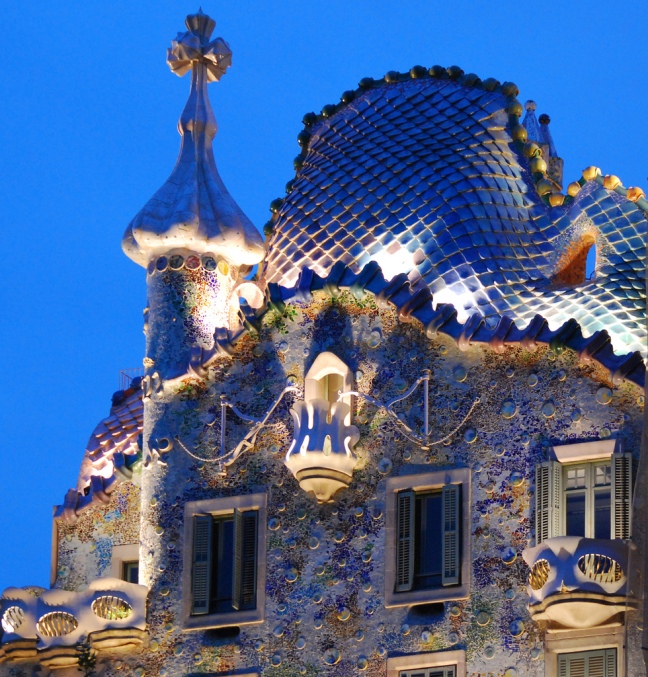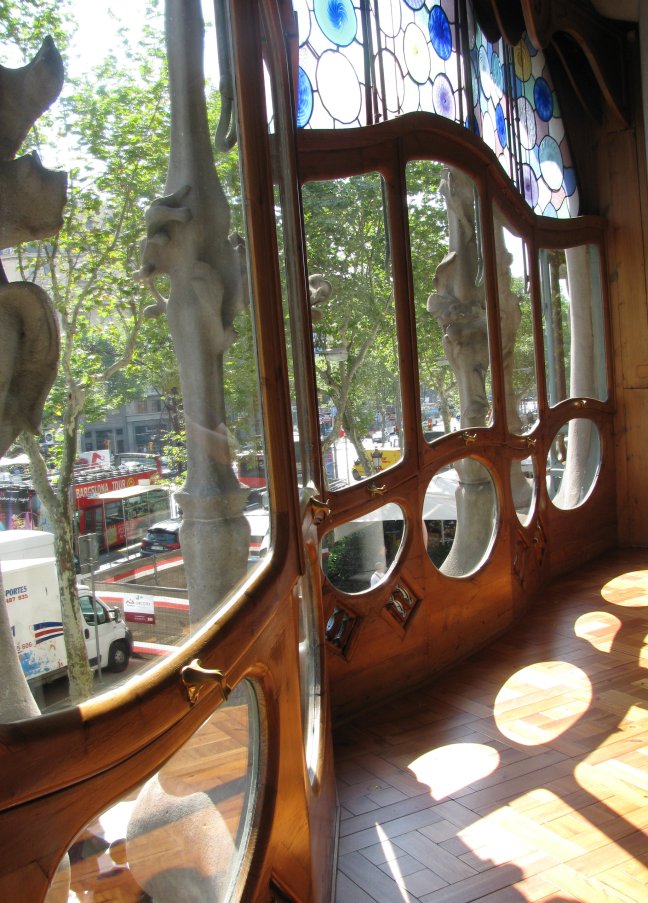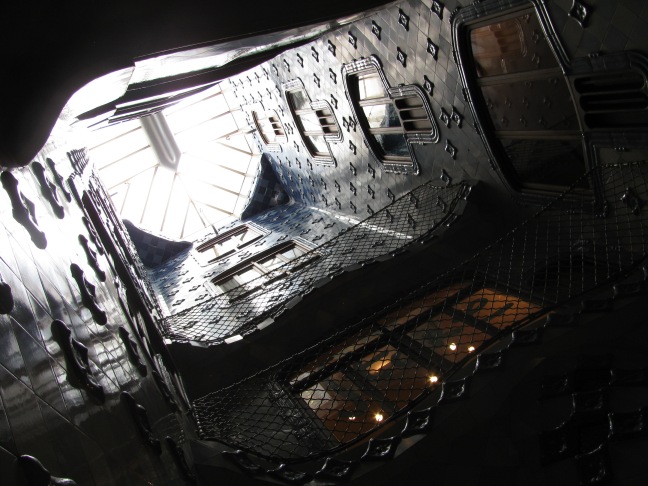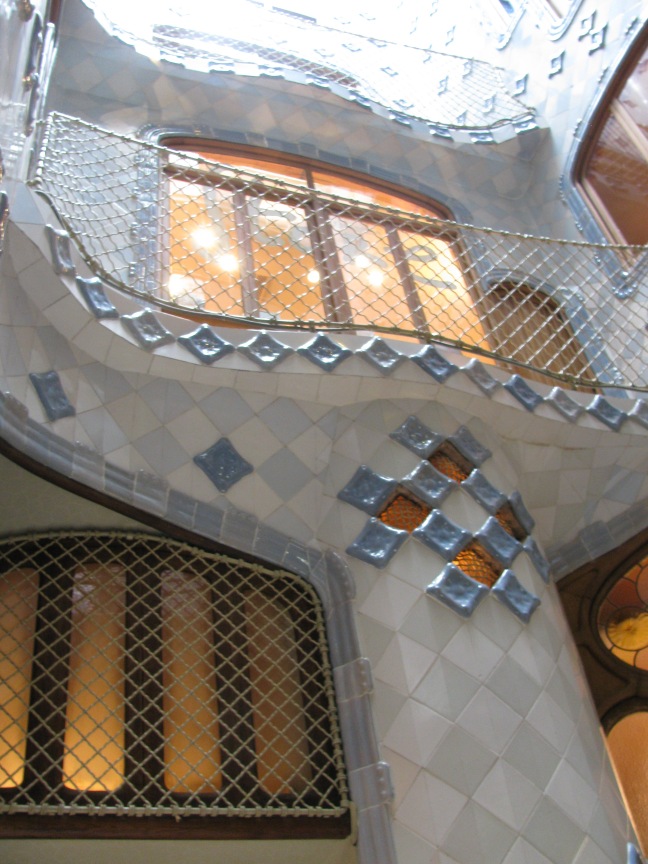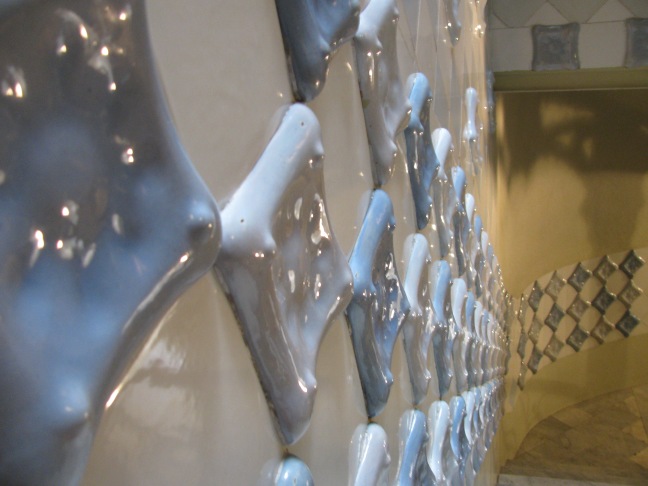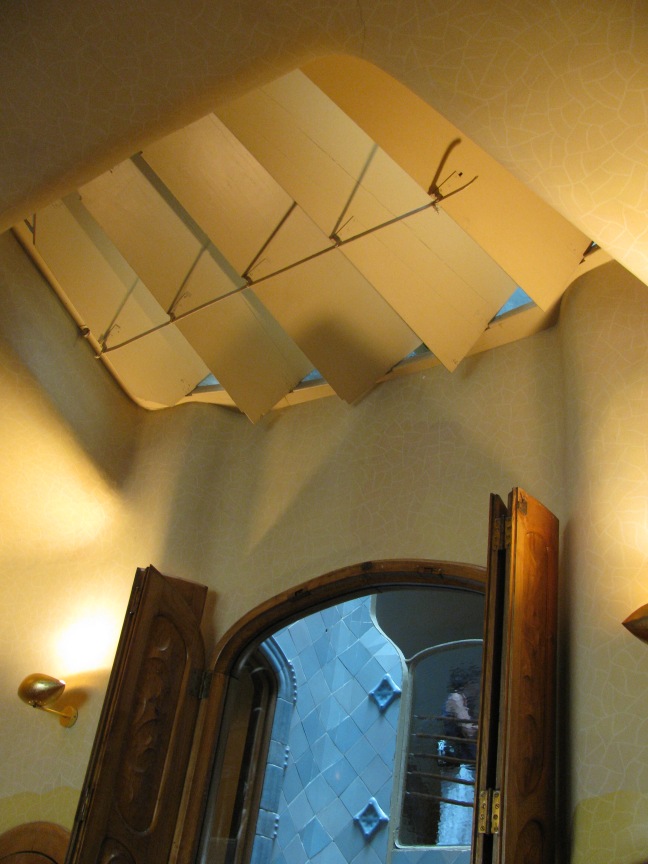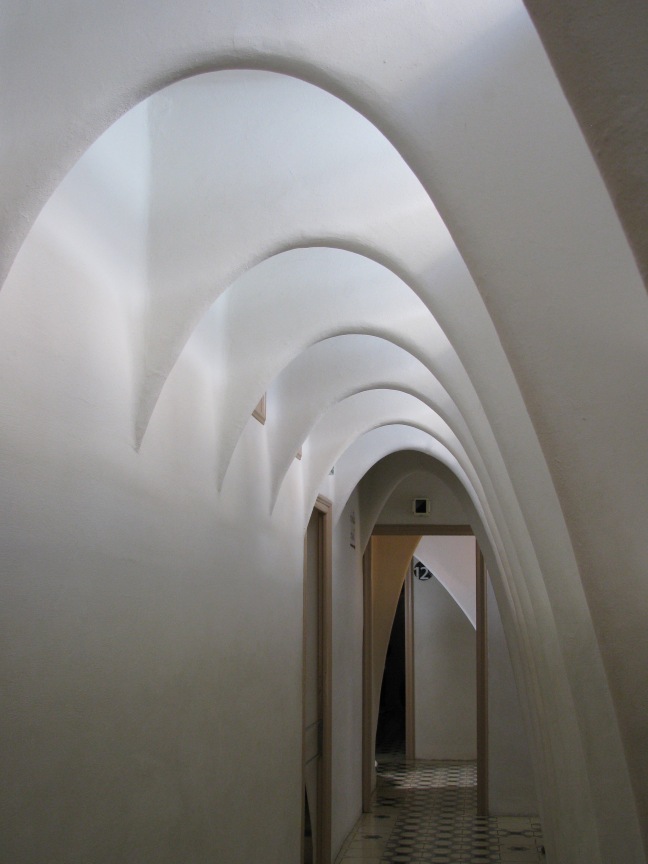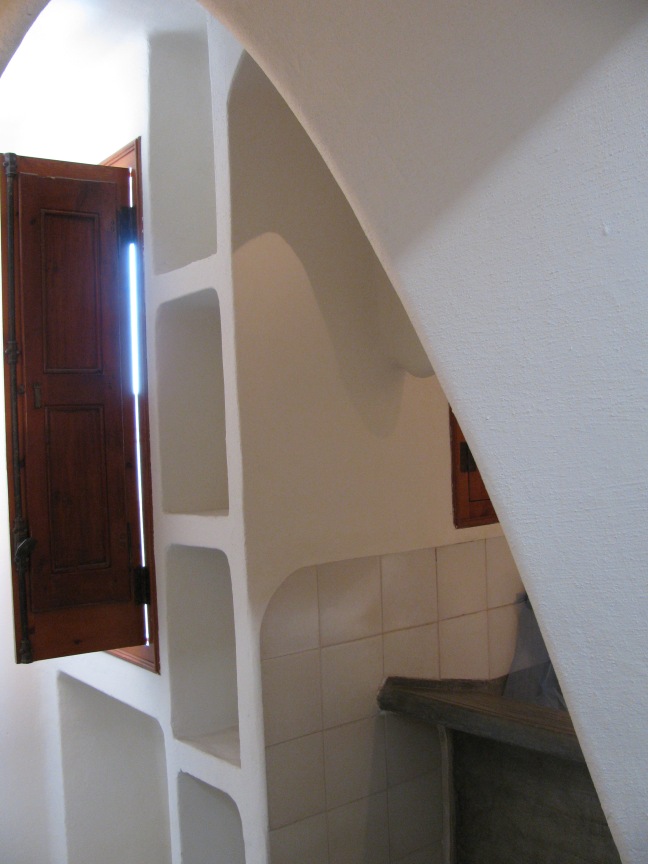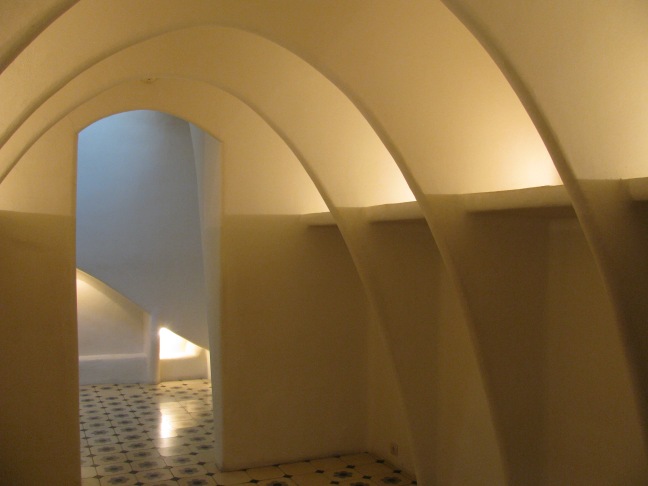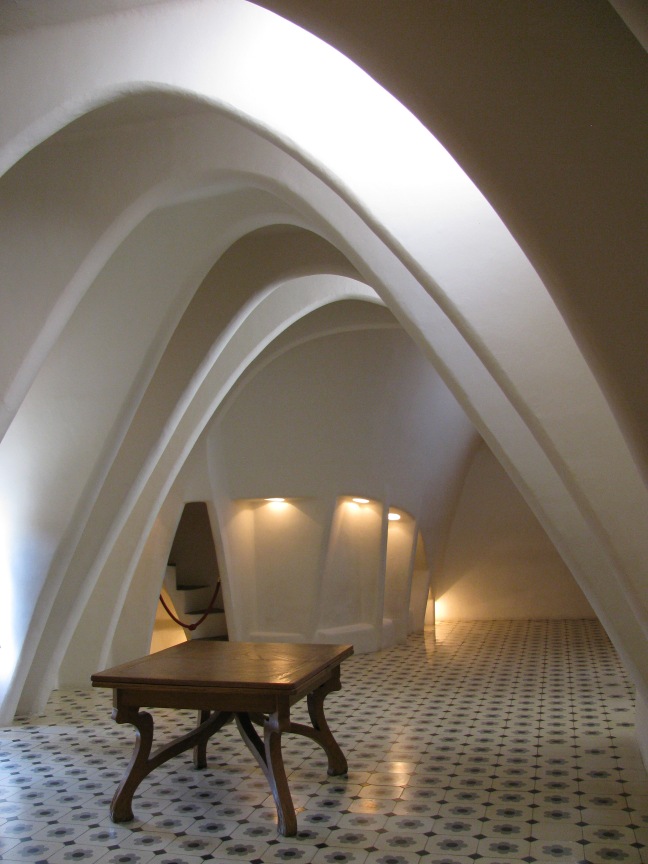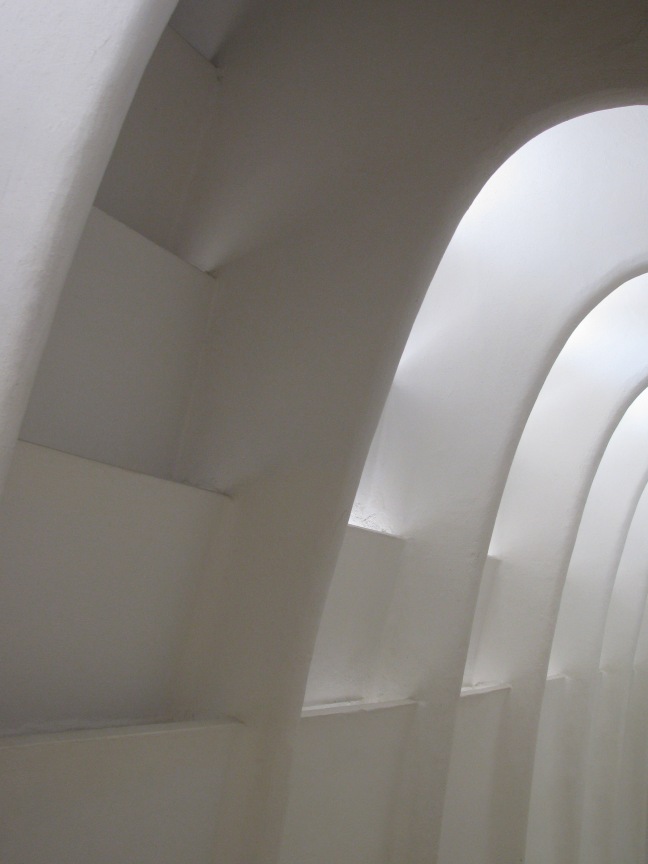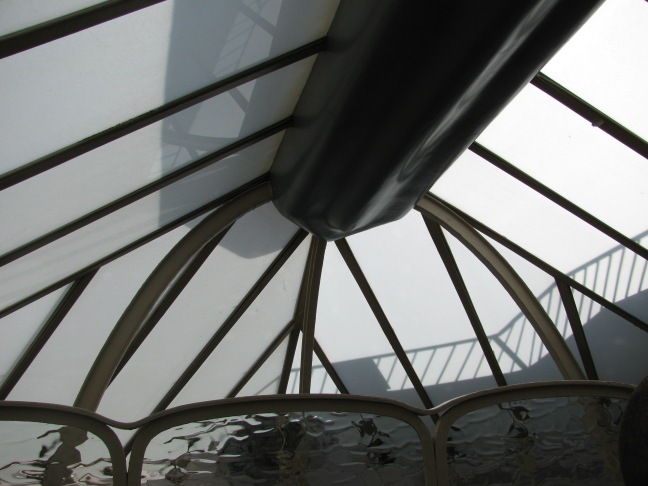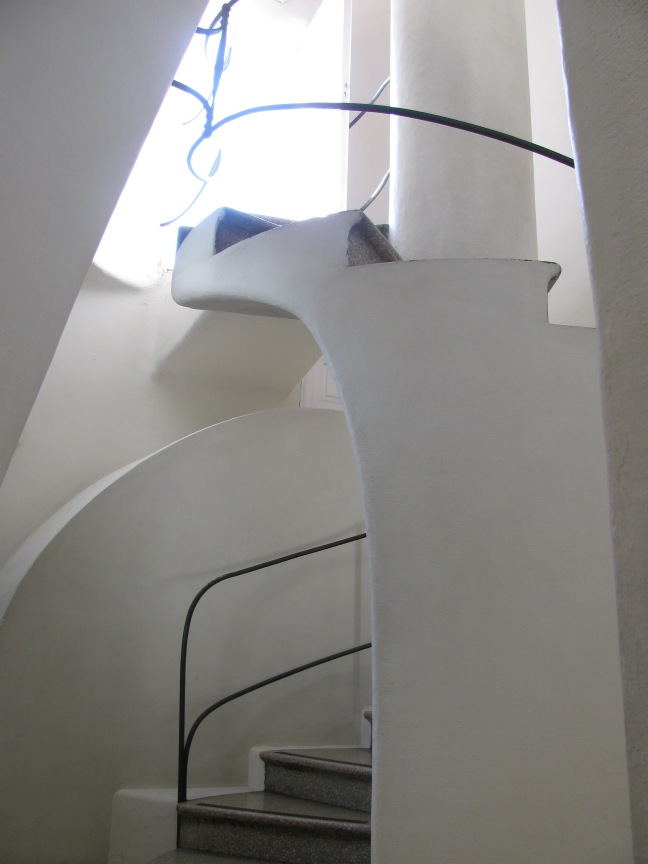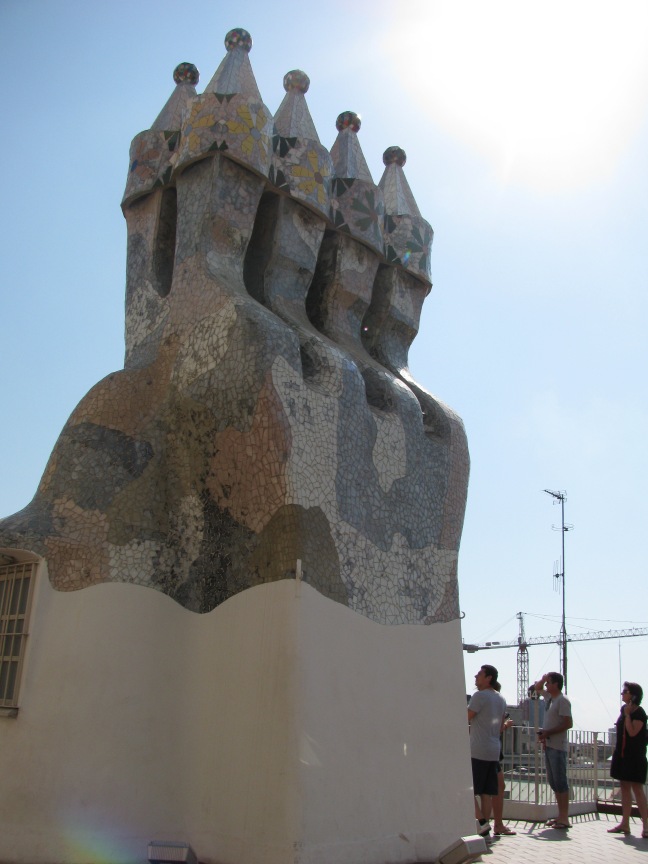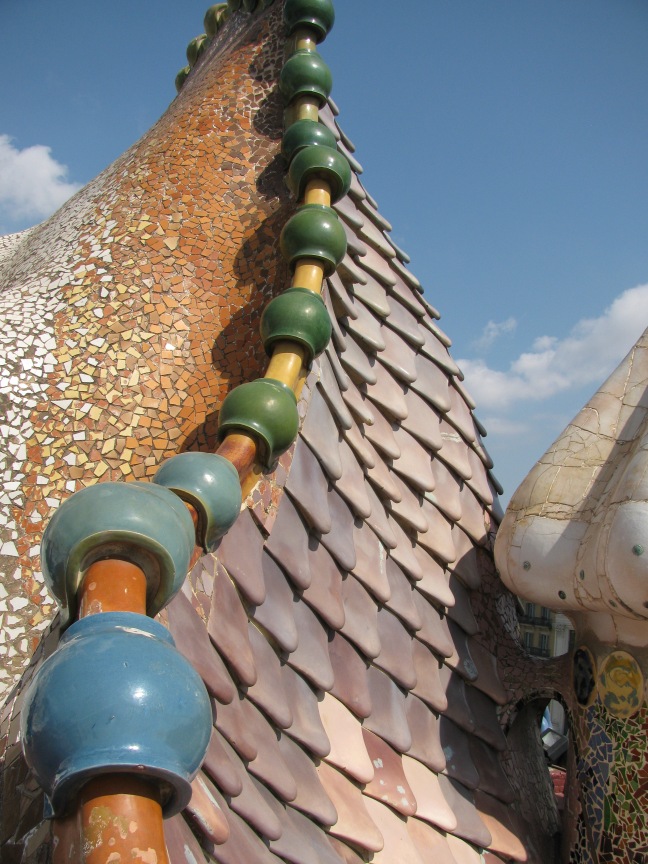If you have a chance to visit Spain, I would recommend a trip to the casa Batlló, built by the Catalan architect Antoni Gaudí in the heart of Barcelona at Passeig de Gràcia, 43.
The modernist building, its contours and colours remind one of the sea.
For those of you who like me are Italian, the interior also recalls the house of the fairy with the turquoise hair (‘fata turchina’) in Luigi Comencini’s Pinocchio.
Below is the Casa Battló’s living room with an undulating glass-tiled front wall, bespoke golden window handles shaped to perfectly fit into a human hand and small wooden ventilation openings:
The ceiling alludes to a vortex in the ocean:
The interior staircase provides a cool retreat from the summer sun:
the skylight channels light in and reflects on the cooling blue and white tiles:
Another room has a sail-shaped skylight, providing aeration and dimmed light:
My favourite part of the house is at the top, where the ceiling takes the shape of a whale skeleton:
What when the house was built was a laundry room, could easily become a contemporary bathroom:
With moorish floor tiles
And shelves built into the wall for bath towels:
The room below could be a living room, with its ribcage ceiling:
A large skylight sits at the top of the interior staircase:
Stairs lead to the rooftop:
where one can step out into the hot sun and also see the various chimney’s of the house:
and admire the dragon-back shaped roof:
For more information, visit www.casabatllo.es/en/visit/
The house is a museum but can also be hired for events.
Related articles:
- Casa Batlló (lightslant.wordpress.com)
- A Home in the Style of Gaudi (terrysblinds.co.uk)
- Antoni Gaudí’s La Pedrera © Nora De Angelli/ www.noraphotos.com (ireport.cnn.com)
